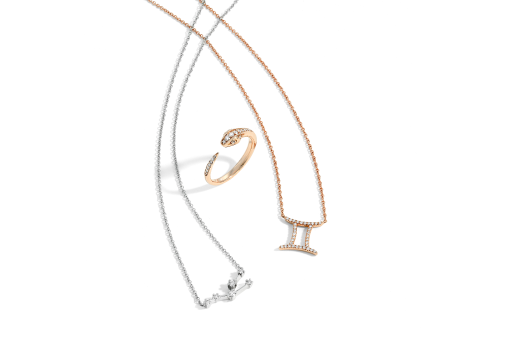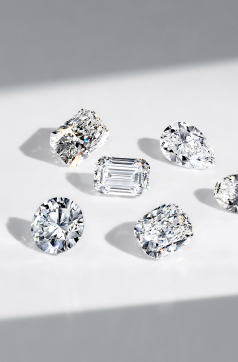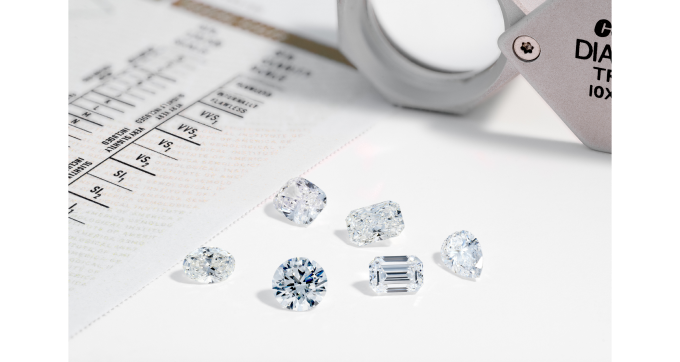When you’re shopping for jewelry, you’re going to come across two super-popular options: white gold and platinum. They’re luminous, lustrous, and they gleam like nobody’s business. However, they’re NOT the same. Although white gold and platinum both make killer jewelry, they have some pretty big differences in terms of their properties, value, and care requirements.
So what’s the deal in the white gold vs. platinum debate? Who wins? Well, technically there isn’t a winner because they’re both awesome, but they are different. Want to know more? Read on!
White Gold vs. Platinum- What’s the Difference?
Like we said, white gold and platinum are shimmer sisters, but not exactly identical twins. Here are some differences you should know about when you’re trying to decide which one to go with.
Composition
The first difference we’ll look at is composition.
White gold is an alloy of gold and other metals, such as silver, nickel, or palladium, which gives it a white or silvery color. Its gold content is measured in karats, with 14k and 18k being the versions you’re most likely to come across. The rest of the alloy is made up of white metals, which give white gold its durability and unbelievable color. For a 14k white gold piece, you’re looking at 58.5% gold, 25.4% copper, 8.7% zinc, and 7.3% nickel.
Platinum, on the other hand, is a naturally occurring metal that is almost pure, with a naturally white-silvery color. Composition-wise, it is made of 95% pure platinum, 3% Copper and 2% Cobalt. While white gold needs rhodium plating to preserve its pale sheen, platinum needs no such embellishment!
Durability
So which one’s more durable? Platinum wins this one hands down. It’s denser and heavier than white gold, making it more resistant to wear and tear. For this reason, it’s a better choice for heavier jewelry like bracelets, engagement rings, and statement necklaces. Platinum is also corrosion-resistant, so it’s not going to tarnish or go all rusty on you.
While white gold has some pretty awesome features, durability isn’t one of them, people. It’s softer than platinum and more prone to scratches and damage. Don’t worry, your white gold ring or earrings will be just fine- as long as you handle them with care!
Rarity and Value
There are only a few deposits of platinum in the world, making it a rarer metal than gold. Naturally, this drives the price up accordingly, making it a lot more expensive than white gold. As an example, an 18K white gold engagement ring is $300 more expensive than 14K white platinum engagement rings are $400 more expensive.
For example, The Ashley, a slender 1.5mm band that amplifies the size and sparkle of the center stone costs $700 in 14k white gold, while an 18k gold ring is $1,000 and platinum will cost $1100. Similarly, The Pave Kamellie, an exquisite ring whose band features a row of glittering pave diamonds, starts at $1,400 in 14K white gold while the 18k version costs $1,700. For platinum, you’re looking at $1,800.
Care Requirements
Both platinum and white gold require proper care and maintenance, but platinum is DEFINITELY easier to maintain. Its natural white-silver color never fades or requires re-plating, unlike white gold, which needs periodic rhodium plating to maintain its bright white color.
Appearance
While both metals have a bright and luminous appearance, platinum has a more distinctive and natural white-silvery color than white gold. White gold can even develop a yellowish tint if it is not alloyed with enough white metals or if the rhodium plating wears off.
Look at it this way. Platinum is like a natural blonde who never needs a hairdresser to refresh her color. White gold needs some touch-ups now and then to keep looking fierce. The moral of the story? If you want a bracelet or necklace that will look nonstop gorgeous with little fuss or maintenance, go platinum.
So Who Wins???
While we’re inclined to say that the choice between white gold and platinum comes down to personal preference, that’s not entirely true. Sure, white gold is less expensive and can have a wider range of design options, but platinum is so much more durable and easy to care for. Plus its unstoppable luster is to die for.
If you're looking for a piece of jewelry that can withstand everyday wear and tear and look just as stunning on your granddaughter one day, platinum is a no-brainer. However, if you're on a budget or prefer a softer and more malleable metal for intricate designs, white gold may be the better option.
Conclusion
Whatever your preference, your next steps are the same: buy a piece you love and provide the right care and maintenance. That way, your white gold or platinum jewelry piece can be a treasured accessory for years to come. By the way, if there’s anything Keyzar Jewelry can do to help you decide on the perfect piece, let us know!






